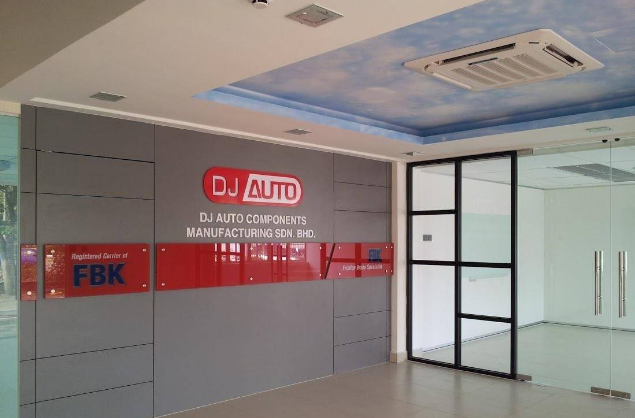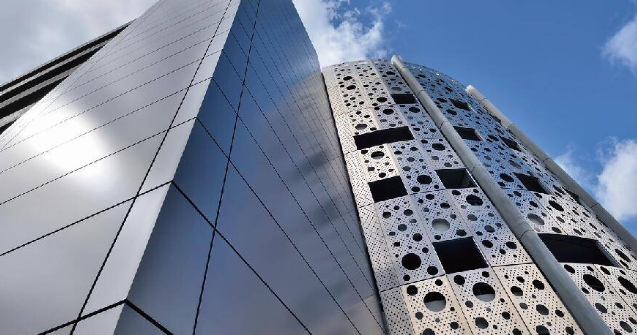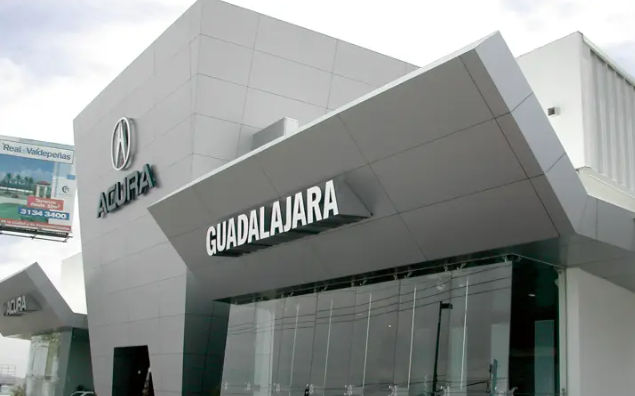Aluminum-plastic composite panels, often referred to as ACPs, are innovative materials used widely in both interior and exterior architectural applications. These panels consist of chemically treated aluminum sheets layered with polyethylene cores, combining metal durability with the flexibility and resilience of plastic. With a variety of finishes and colors available, aluminum-plastic panels are highly adaptable for modern construction and design projects. This article explores the distinct advantages of these panels and their various decorative applications in construction.
1. Overview of Aluminum-Plastic Panels
Aluminum-plastic panels have transformed building materials due to their unique properties. By combining aluminum and polyethylene, they provide enhanced durability, weather resistance, and design versatility. These panels are available in over 100 color options, including monochrome, brushed, mirror, wood grain, marble, and high-gloss finishes. Special series like fire-resistant and fluorocarbon panels offer additional functionalities, catering to different architectural needs.

2. Rich Colors and Decorative Flexibility
One of the standout features of aluminum-plastic panels is their rich color palette. This flexibility allows designers to select or customize colors that fit seamlessly with any architectural style, from modern to traditional. With options ranging from bright, high-gloss finishes to subtle, matte tones, aluminum-plastic panels bring character and decorative charm to any project. The availability of diverse patterns and textures, including wood and stone effects, expands their use in interior design, where they add aesthetic appeal without the weight or cost of natural materials.
3. Lightweight Yet Impact-Resistant
Despite their lightweight construction, aluminum-plastic panels exhibit impressive impact resistance. This unique balance between weight and strength makes them ideal for areas prone to harsh weather, such as regions with frequent sandstorms or high wind loads. This resilience to environmental wear and tear ensures that aluminum-plastic panels maintain their appearance and integrity over time, reducing the need for frequent maintenance.
4. High Surface Flatness for a Sleek Look
Aluminum-plastic panels are manufactured with a focus on surface flatness. Precision in dimensional control during production ensures that the panels are uniform in thickness, providing a smooth, consistent appearance. The high rigidity of aluminum allows these panels to maintain their flatness over long periods, creating a polished, modern aesthetic in applications like storefronts and building facades.
5. Durability and Weather Resistance
With features like weather resistance and UV protection, aluminum-plastic panels perform exceptionally well in outdoor applications. These panels are designed to withstand a wide range of environmental conditions without fading, peeling, or corroding, making them an excellent long-term investment for building exteriors. Their strong adhesion properties also enhance durability, ensuring that the panels retain their original appearance even in challenging climates.
6. Fire Resistance and Non-Toxic Composition
Safety is a top priority in construction materials, and aluminum-plastic panels do not disappoint. The core material, typically polyethylene, is sandwiched between fire-retardant aluminum layers, making these panels highly flame-resistant. This non-toxic composition provides an additional safety layer, giving peace of mind for use in both residential and commercial projects.

7. Low Maintenance Requirements
Due to their self-cleaning properties, aluminum-plastic panels require minimal maintenance. Unlike many materials that trap dirt and grime, aluminum-plastic surfaces repel dust and other contaminants. For long-lasting cleanliness, occasional washing with a neutral detergent is usually sufficient, making them ideal for hard-to-reach installations and large-scale facades.
8. Ease of Processing and Installation
Another major advantage is the ease of processing that aluminum-plastic panels offer. They can be easily cut, bent, and shaped using standard woodworking tools, allowing designers and architects to create intricate patterns and customized shapes. Installation is straightforward, thanks to the lightweight nature of the panels, which reduces transportation and labor costs. This adaptability significantly shortens construction timelines.
9. Lightweight Design with Structural Benefits
Aluminum-plastic panels are much lighter than many traditional materials, making them easier to handle, transport, and install. This reduces the load on buildings and eliminates the need for heavy support structures. Additionally, lighter materials translate to faster and safer installation, which is particularly valuable in large-scale projects.
10. Specifications of Aluminum-Plastic Panels
For architectural projects, aluminum-plastic panels are available in various sizes and thicknesses, allowing for greater design flexibility. The typical specifications include:
Thickness: 3mm, 4mm, and 6mm
Width: 1220mm, 1500mm, 2000mm
Length: Standard lengths range from 1000mm to 6000mm
The standard panel size of 1220mm x 2440mm is widely used in construction, providing a balanced option that meets most project requirements.

Decorative Applications of Aluminum-Plastic Panels
The unique properties of aluminum-plastic composite panels make them suitable for a diverse array of applications:
Building Facades and Exterior Walls
Curtain Walls
Signage and Branding
Interior Wall and Ceiling Panels
For interior spaces, aluminum-plastic panels provide decorative wall cladding and ceiling solutions. Their lightweight nature and range of textures, including wood grain and marble effects, make them versatile for creating stylish and functional spaces.
Advertisement Displays and Exhibition Booths
Renovation of Older Buildings
Installation Techniques for Aluminum-Plastic Panel Signage
In signage applications, two common installation methods are used:
Conclusion
Aluminum-plastic composite panels are a versatile and durable material, offering a range of advantages from lightweight construction and ease of installation to fire resistance and decorative flexibility. Their variety of colors, textures, and finishes make them ideal for modern architectural designs, while their durability and low maintenance ensure long-term satisfaction. From high-rise facades to interior decorative panels, aluminum-plastic composite panels have proven their value across many applications, standing as a reliable choice for contemporary construction and design projects.
English
العربية
Français
Русский
Español
Português
Deutsch
italiano
日本語
한국어
Nederlands
Tiếng Việt
ไทย
Polski
Türkçe
አማርኛ
Bahasa Melayu
தமிழ்
Filipino
Bahasa Indonesia
magyar
Română
Монгол
қазақ
Српски
हिन्दी
فارسی
Kiswahili
Slovenčina
Slovenščina
Svenska
українська
Ελληνικά
Suomi
Հայերեն
עברית
اردو
Shqip
বাংলা
Hrvatski
Afrikaans
Māori
සිංහල
Oʻzbekcha
latviešu
Беларуская мова
Bosanski
Български
ქართული
Lietuvių
Malti












